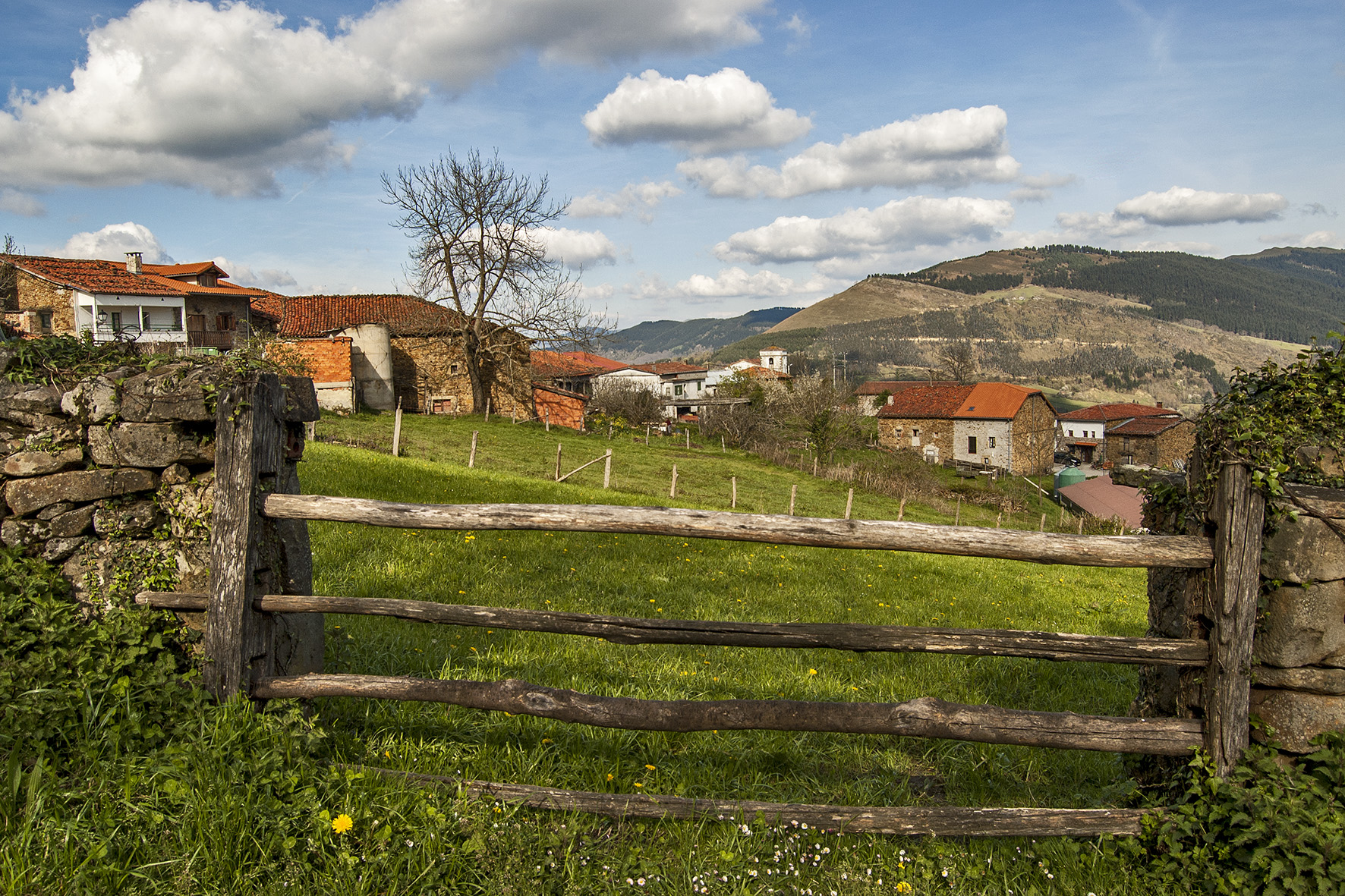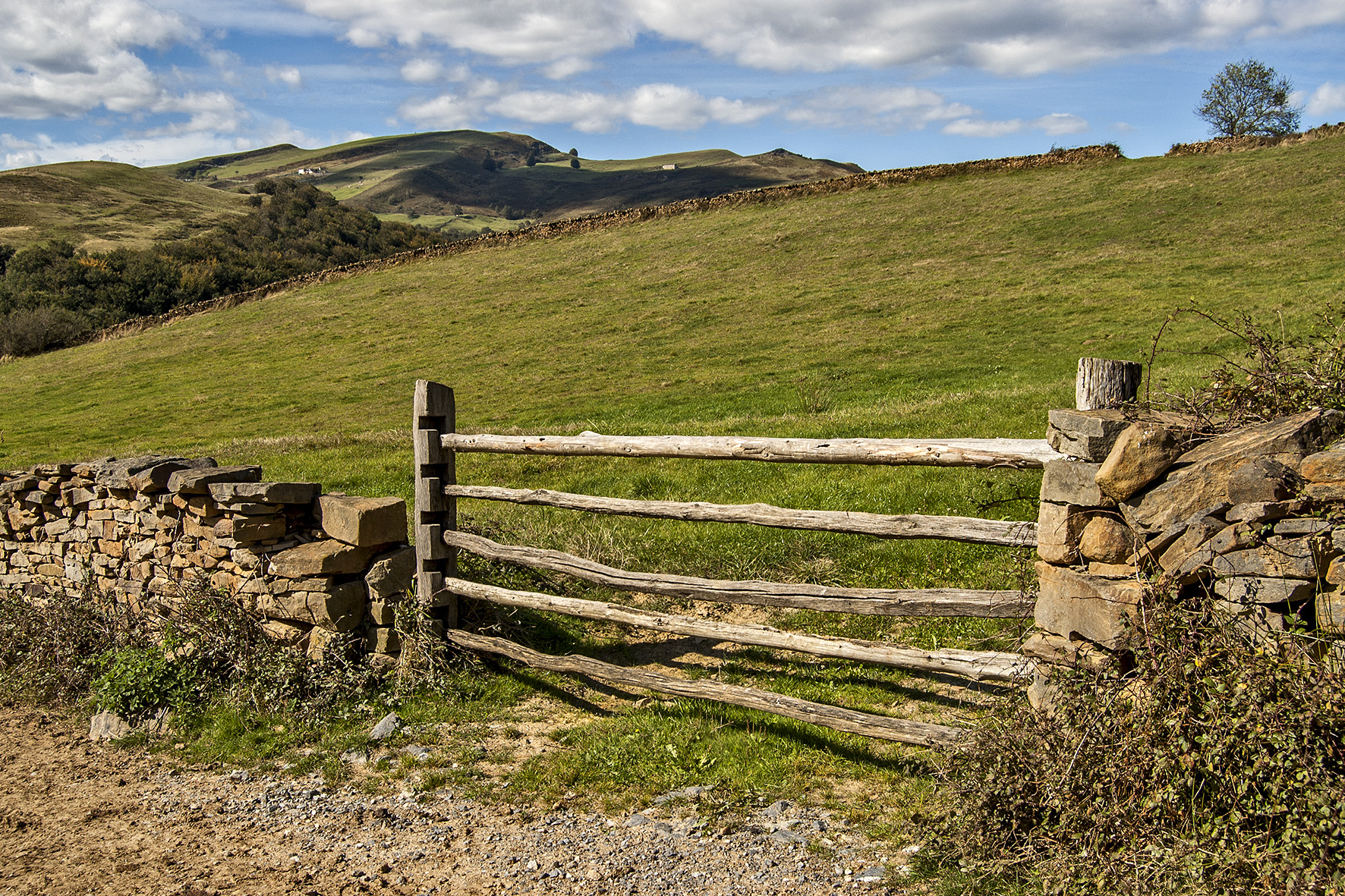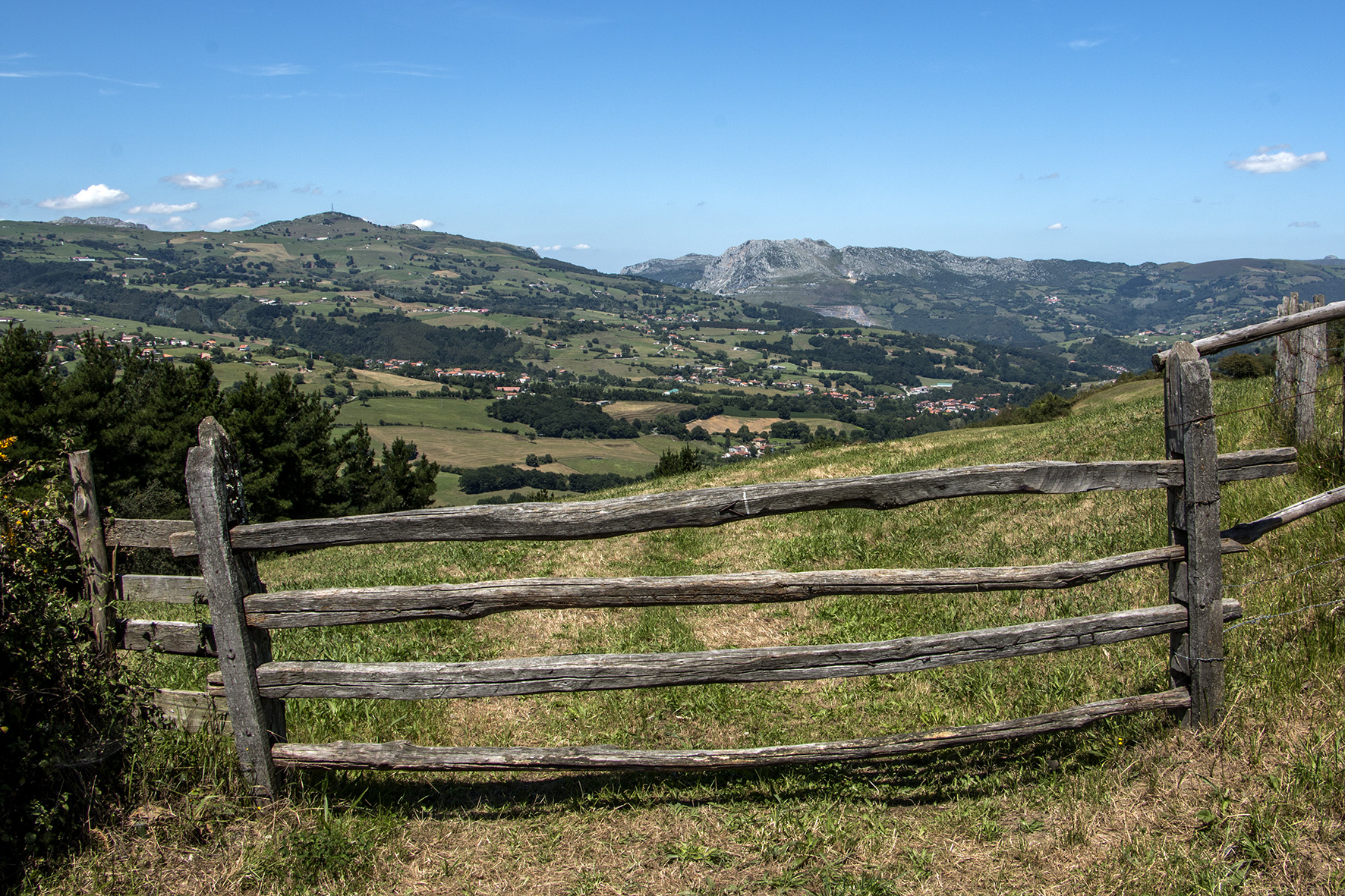
Field gate in the neighbourhood of Bernales (Carranza), 2008. Miguel Sabino Díaz.
Enclosure of open fields in the Valley of Carranza (Bizkaia) was accomplished by the use of either dry-stone walls or living hedges, as stated in the Regulation for the clearing and legitimacy of land formerly subject to common rights in the Valley, approved by the Council at the sitting on 27 May 1910: “Land cleared in accordance with the provisions of this Regulation will necessarily be enclosed with a wall 1.50 metres in height or a ditch and living hedge of 1.75 metres…”.
The mentioned types of closure have over the years been abandoned and almost entirely replaced by wooden stakes and barbed wire. Access to the fenced plot of land was, and in many instances still is, through gates called latas, portillos or barreras.

Gate in La Calera del Prado (Carranza), 2008. Miguel Sabino Díaz.
The First Section of the old Municipal Ordinances adopted on 1 August 1885 establishes the following for such agricultural constructions:
“Field gates will be constructed of two standing square posts or pisones 6 inches in thickness, with six holes each, those on the left pale to firmly hold the gate bars and those on the right to allow for opening; six 5-inch-wide and 2-inch-thick bars placed and positioned so that the distance or gap between them is not higher than the width of four fingers; the height of the gate will be 6 feet from the ground to the top bar inclusive”.

View of the Valley of Carranza from a field gate in Bernales, 2017. Miguel Sabino Díaz.
Traditional field gates are numerous today across the length and breadth of the Valley. Made in days gone by, generally of chestnut wood, the support posts are around 1.30 to 1.40 m in height, with an average spacing of 2.6 to 3.5 m between them. They are 9 to 10 cm thick and have four or five side-to-side holes. Horizontal bars called latones — also known as barrerones— are inserted into the holes to close the gate and prevent livestock from accessing the pastures.
In the southern part of the Valley —lands under the La Calera del Prado council jurisdiction— one of the gateposts have L-shaped notches cut out instead of the usual holes.
Miguel Sabino Díaz – Etniker Bizkaia – Etniker Euskalerria Groups
Translated by Jaione Bilbao – Language Department – Labayru Fundazioa
References for further information: Livestock Farming and Shepherding, Agriculture, and House and Family, all part of the Ethnographic Atlas of the Basque Country.